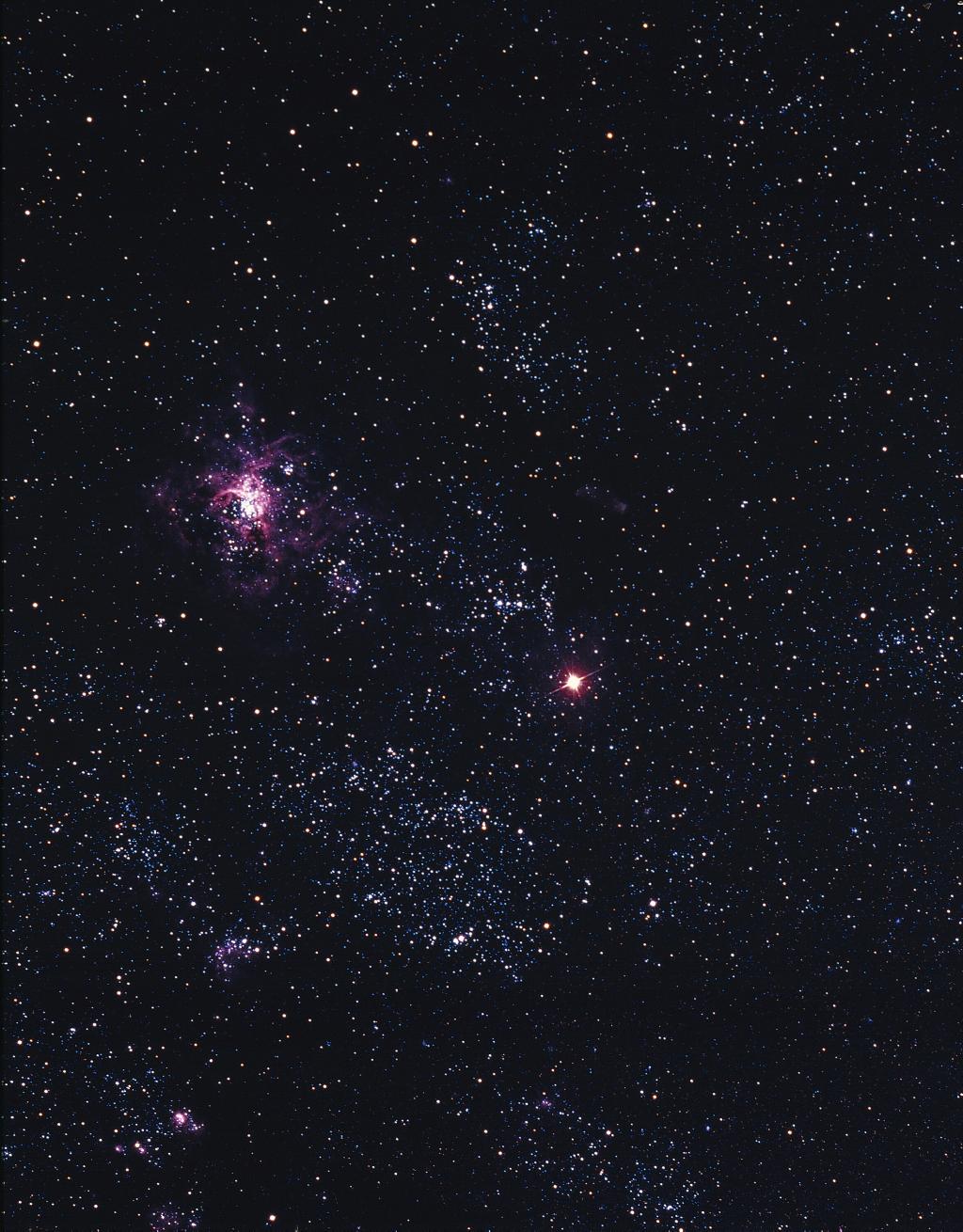
Caption: SN 1987A in the Large Magellanic Cloud (LMC).
Features:
- Modern supernova
SN 1987A is the bright, pointy "star" near the center.
It is pointy because it is so bright that it is overexposed and one can see its pointy diffraction pattern.
- SN 1987A
was the first discovered supernova
of 1987: hence the name
SN 1987A with A for first.
- The LMC
is a dwarf irregular galaxy
that is in orbit around the Milky Way.
In fact, the
LMC
is the prototype
of its own
galaxy type:
the
Magellanic spiral galaxies.
The LMC is at distance ∼ 50 kiloparsecs.
- Many (nearly all?) of the stars in this
picture are foreground stars
in the Milky Way.
- The pink
region is 30 Doradus,
a bright H II region.
The pink glow
is Hα
atomic spectral line
emission from atomic hydrogen.
30 Doradus is also a
star forming region and it extends
farther than is seen in this image.
- SN 1987A, in fact, occurred on the
outskirts of 30 Doradus.
This is to be expected.
SN 1987A is a
core-collapse supernova.
Core-collapse supernovae
are the explosions of stars
of greater than about 8 solar masses
at the end of their nuclear burning lives.
Such massive stars live less than ∼
10 million years, and so usually have no time to wander away from the
star formation region where
they were born.
So the progenitor star of
SN 1987A was almost certainly
formed in 30 Doradus.
- SN 1987A, the most famous of all modern
supernovae, was discovered by
Ian Shelton (1957--),
the brother of yours truly's
UNLV colleague David Shelton.
Download site: NOAO Image Gallery: Supernova 1987A in the Large Magellanic Cloud.
Image link: Itself.
Local file: local link: sn_1987a.html.
File: Supernovae file: sn_1987a.html.